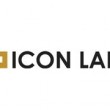

For those unfamiliar with the Internet of Things (IoT), it is a network not just of smartphones and computing systems but also daily ‘Things’. (more…)
May 4, 2017
Posted by: Avadhoot Patil
Icon Labs, a provider of security solutions for IoT and edge devices, has announced its IoT Certificate management solution supports Infineon Technologies’ OPTIGA™ Trusted Platform Module (TPM). (more…)
April 27, 2017
Posted by: Avadhoot Patil

2017 is already proving to be the year the Internet of Things (IoT) demonstrates its worth. While consumers are continually impressed by virtual assistants that manage lighting, thermostats, ovens and regulate fridge temperatures and inventory, the use of IoT technology for businesses, both large and small, is turning heads. (more…)
April 5, 2017
Posted by: Avadhoot Patil

Icon Labs, a provider of security solutions for IoT and edge devices, has announced the availability of the Floodgate Certificate Authority (CA). (more…)
March 22, 2017
Posted by: Avadhoot Patil

Over the coming months, Qualcomm Technologies will roll out changes and updates to our product brand positioning to best articulate the value of our technology and products for our customers and their end users. (more…)
March 21, 2017
Posted by: Avadhoot Patil

Wind River®, a global provider of software for the Internet of Things (IoT), is advancing Industrial IoT (IIoT) with the introduction of a commercially deployable software virtualisation platform. It is designed for critical infrastructure companies, enabling them cost-effectively to evolve aging legacy control systems. (more…)
March 14, 2017
Posted by: Avadhoot Patil

IoT solutions for the industrial manufacturers will typically employ services such as remote management, OTA software updates, preventative and predictive maintenance as well as the ability to integrate operational information with the company’s enterprise systems. (more…)
March 9, 2017
Posted by: Avadhoot Patil

According to research carried out by 451 Research, 71% of global businesses are now gathering Internet of Things (IoT) data and 90% expect to increase spending over the next 12 months. (more…)
February 13, 2017
Posted by: Avadhoot Patil

SIMalliance, the non-profit industry association which simplifies aspects of hardware-based device security, has announced Simulity Labs Ltd as its latest strategic partner. (more…)
January 25, 2017
Posted by: Avadhoot Patil

The telecom industry is good at generating confusion, says freelance IoT and communications writer, Bob Emmerson. LTE Cat-1 services are being launched in the States but not NB-IoT (LTE Cat NB1 is the official term), which only arrives in 2018. (more…)
January 20, 2017
Posted by: Avadhoot Patil